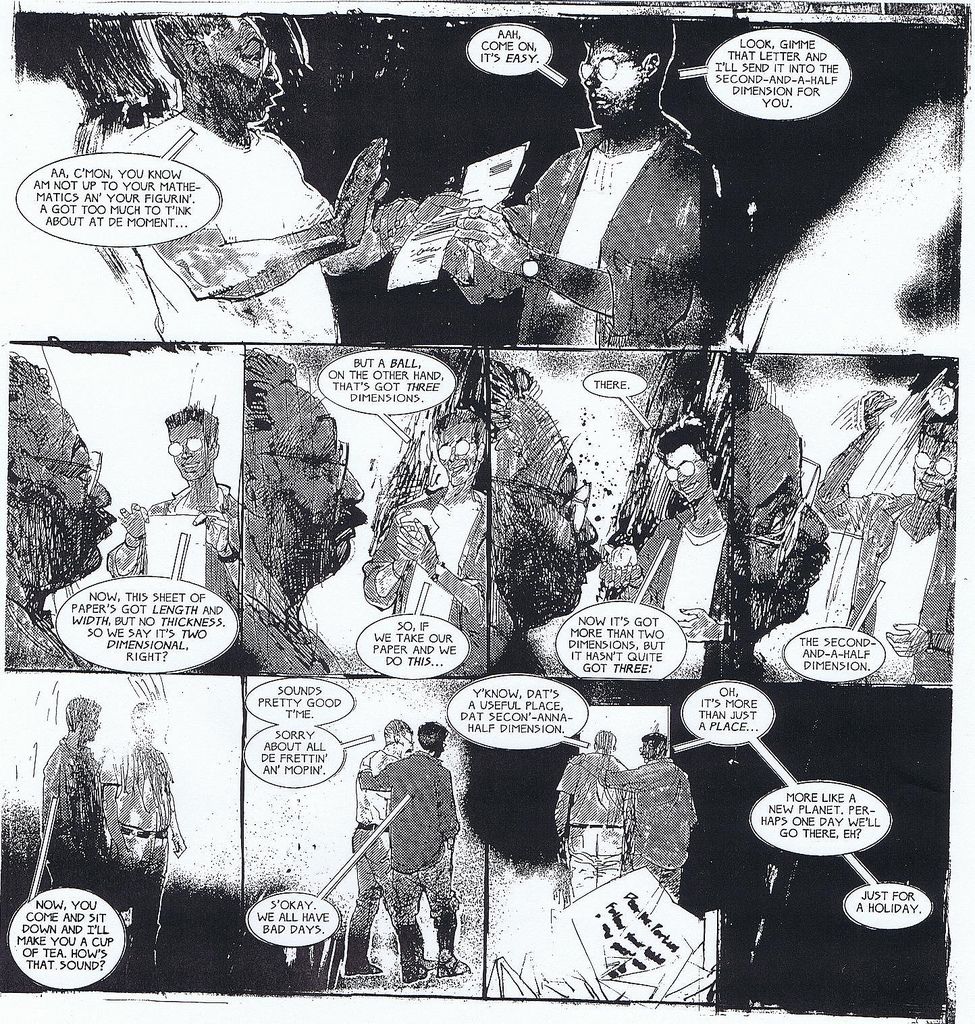It is perhaps the greatest comic never published. Intended to be a 12-issue miniseries ambitious and complex enough to make Watchmen look like Wizard of Id on an off day, Alan Moore and Bill Sienkiewicz's Big Numbers was a Joycean look at life in a small English town as a big-box retailer prepared to set up shop. But this grand fiction-as-fractal-geometry experiment only managed to produce two published issues in 1990 before hitting a massive delay during work on issue #3, losing Sienkiewicz, moving from Moore's Mad Love publishing imprint to Kevin Eastman's Tundra, tapping Sienkiewicz's then-teenaged assistant (and current reclusive Pim & Francie creator and alt-horror superstar) Al Columbia to take over, losing Columbia and all the pages he'd completed, and finally shuddering to a halt.
The exact details of these events have long been a matter of conjecture and dispute, involving as they do some of comics' major (and in some cases most mercurial) talents: Moore, Sienkiewicz, Columbia, Eastman, then-Tundra editor Paul Jenkins, and the saga's most reliable chronicler, Moore collaborator Eddie Campbell, who told the behind-the-scenes story as he knew it in his book Alec: How to Be an Artist. Meanwhile, nothing has been seen of the all-Columbia fourth issue, long rumored to have been destroyed in its entirety by the perfectionist artist. Ten pages of issue #3 saw the light of day in the short-lived SubMedia magazine in 1999; that was all that most anyone saw, or even knew for sure existed, until January 2009, when a photocopy of the entire third issue surfaced on eBay with art credited to Columbia. The pages were purchased by Irish bookseller Pádraig Ó Méalóid, who (with Moore's permission) scanned and posted them on his LiveJournal.
Now Ó Méalóid has returned to the scene of one of comics' great literary mysteries, and he's brought along one of the three people best equipped to get to the bottom of things: Bill Sienkiewicz himself. In an essay apparently originally intended for Heidi MacDonald's blog The Beat but now posted to Ó Méalóid's blog, Sienkiewicz explains his side of the Big Numbers debacle in detail: the status of Big Numbers #3 (completely finished); the involvement of Al Columbia in the issue (zero, except for maybe a background or two); why he dramatically changed his art style from photorealistic to Sienkiewicz-scratchy between issues #2 and #3 (the prohibitive effort, time, and cost of sustaining his stable of photoreference models, two of whom tragically died and one of whom moved to Germany in the midst of making the comic, plus the opportunity the script for #3 afforded him to make a stylistic shift work for the story); how #3 fell off the scheduling rails (during that time he lost a parent, a relationship, Columbia, and a lot of money); the status of Big Numbers #4 (he hasn't seen it, but heard (like all of us have) that Columbia destroyed the original pages before they could be published); the status of his relationship with Columbia (they've patched everything up; he wishes Al well); and what you've likely been waiting for -- whether or not he and Moore will ever finish the series (he'd like to!):
To this day, I've lamented that Alan and I never finished the series. I actually literally can't stomach the thought of it remaining a hole in our creative lives, certainly in mine. And honestly, there's not a week that goes by that I don't think about completing it, about contacting Alan and saying, “Adult here. What say you? Let's kick out the jams!” I understand his great disappointment, though I've no doubt he's moved on. And gotten even more brilliant, if that's possible. I've apologized to Alan personally, and to the others, for my part.
Read the whole thing and imagine what might have been.


